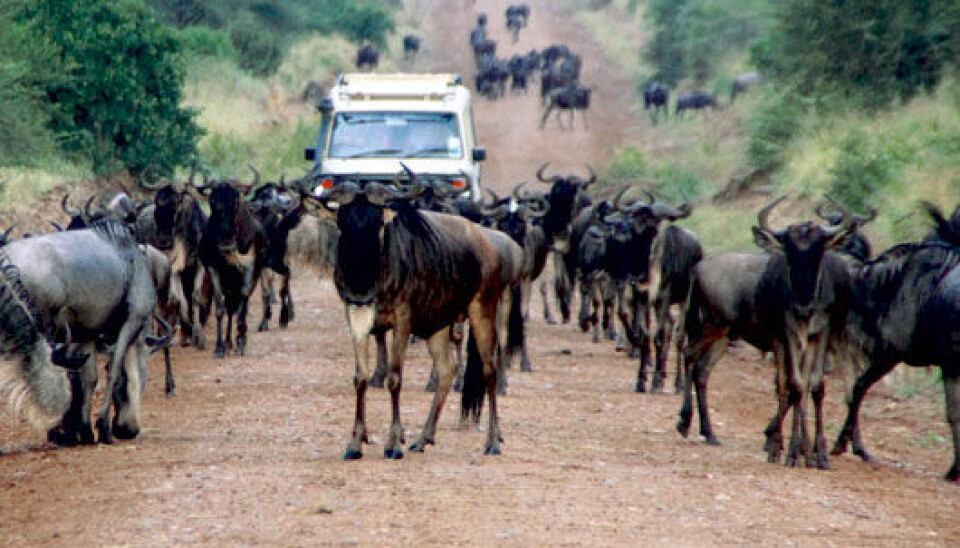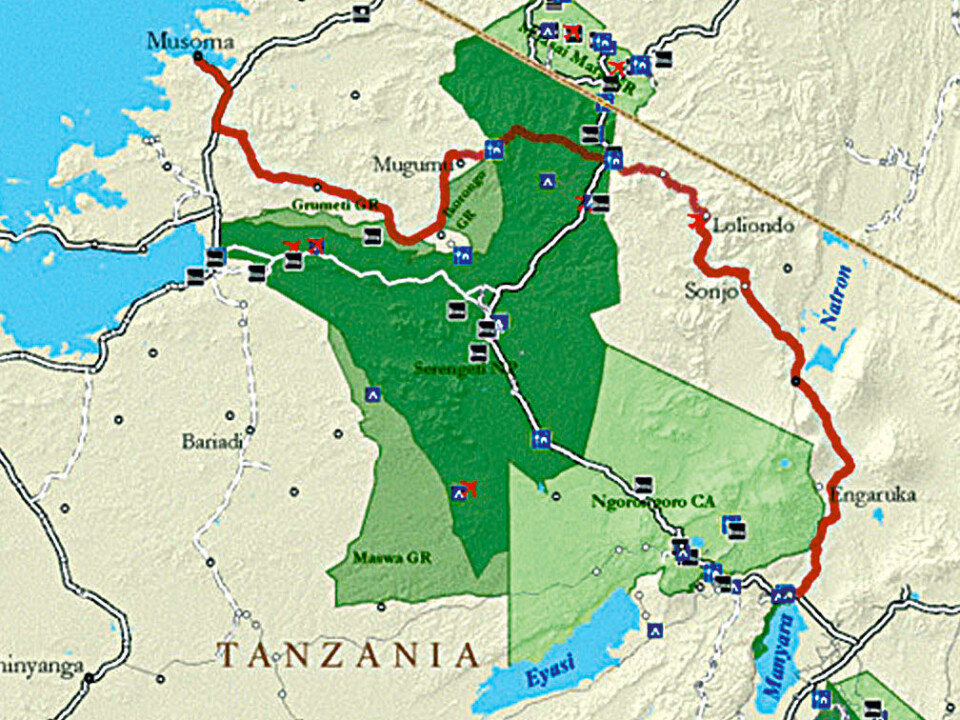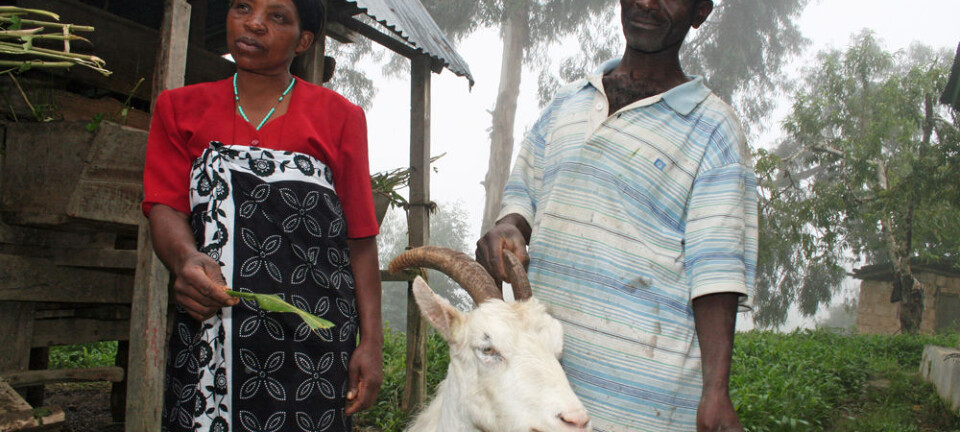An article from Norwegian SciTech News at NTNU

Serengeti road divides biologists
Will a road across the northern tier of Serengeti National Park ruin it?
Denne artikkelen er over ti år gammel og kan inneholde utdatert informasjon.
Serengeti National Park in Tanzania may be the most iconic national park in the world. Here, lions, leopards, elephants, hippos and giraffes wander free. Rivers of wildebeests, zebra and Thompson’s gazelles – more than 2 million all told – cross the landscape in one of the largest animal migrations on the planet.
While the park is ideally located for wandering wildebeests, its location is less than ideal for the region’s residents. They see the undeveloped park as a formidable barrier to trade and travel.
To address this, the Tanzania government now plans to build a gravel road across 50 km of the northern part of the park to link the country’s coast to Lake Victoria and countries to the west, including Uganda, Rwanda and the Democratic Republic of the Congo.
International outcry
Plans for the road have raised an international outcry. The fear is that the road, which bisects the wildebeest migration route near the Kenyan border, will bring an end to the annual migrations and irreversibly change the park. In September 2010, a coalition of 27 scientists published their objections in an opinion piece in Nature magazine.

“The proposed road could lead to the collapse of the largest remaining migratory system on Earth,” the scientists wrote, led by Andrew Dobson from Princeton University.
But Eivin Røskaft, a biologist at the Norwegian University of Science and Technology (NTNU) who has worked with cooperative projects in the park for the last two decades with Tanzanian scientists, says the coalition’s reaction is “emotional” and ignores the fact that Tanzanians should be allowed to decide their own fate. His rebuttal and that of his Tanzanian colleagues will be published later this year in an article in Conservation Biology magazine.
“Of course the best thing (for Serengeti) would be to go back to 2000 years ago, but we can’t do that,” Røskaft says. “Tanzania deserves to develop. We have to look at the total ecosystem and there is a need for new roads.”
A broader perspective
Røskaft is co-coordinator of a partnership between the Tanzania Wildlife Research Institute and NTNU that is studying the region where the road will be built. The studies provide a snapshot of the area before road construction, and will be continued after the road is built. That gives scientists the ability to detect possible problems before they get out of control, Røskaft says.
Road construction clearly will have impacts, adds Røskaft, but it is important to see the road from a broader perspective. In some ways, he says, argument over the road distracts scientists and policymakers from far more serious threats.
Here, road building ranks far lower as a threat than issues such as climate change, poverty, high population densities and deforestation, particularly north of the park in Kenya, Røskaft says.
The communities surrounding the northern part of the park are among the poorest in Tanzania, with an annual per capita income of just over $100. Families are big, with an average of 11 people per household in one area near the park. That drives people to illegally poach bushmeat.
Calving areas a concern
“As a scientist I am concerned about all threats,” he says. “But it is how you manage the system from a bigger picture – there are a lot of things you can do,” including trying to find ways to give residents alternative sources of income, such as beekeeping, handicraft production and community-based ecotourism.
The existing road system is also problematic, Røskaft says. It bisects the wildebeest calving areas, and traffic in the park has tripled over recent years, with 120,000 vehicles entering the park in 2011 alone. Fully 85 per cent of these are tourist vehicles. Thus, he says, the new road might take some of the pressure off the roads that cross calving areas.
“There is no question about it, the (northern) road will come,” he says. “What we can do is advise them so they develop it in the least environmentally damaging way possible.”

































